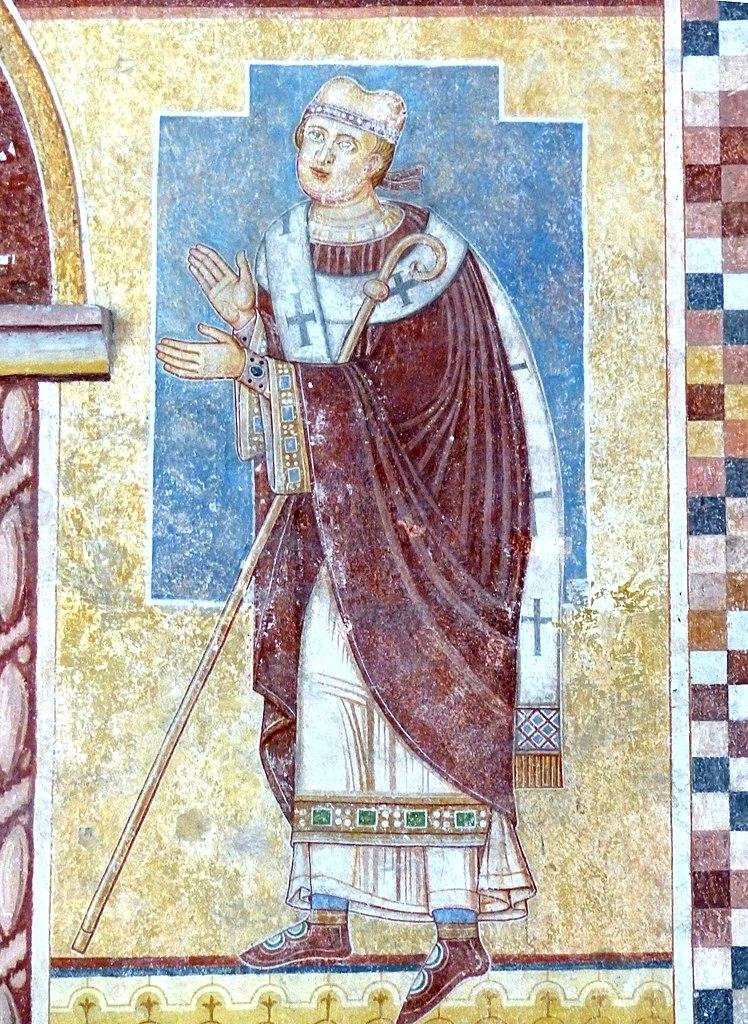A rare 12th-century picture stone was recently unearthed in the village of Klotzow in the Vorpommern-Greifswald district of northern Germany.
 Rare 12th-century picture stone. Credit: Christian Moeller / Ministry of Science, Culture, Federal and European Affairs Mecklenburg-Vorpommern
Rare 12th-century picture stone. Credit: Christian Moeller / Ministry of Science, Culture, Federal and European Affairs Mecklenburg-Vorpommern
The discovery, made by homeowner Peter Wittenberg during construction work on his property, has garnered significant attention from historians and archaeologists due to its unique historical significance and the iconography it bears.
The picture stone, carved from granite, measures approximately three feet in height, two feet in width, and 1.3 feet in depth. It features an engraved depiction of a standing man, with a cross prominently displayed over his midsection. The cross is carved onto what appears to be a stole hanging from a loop around the figure’s neck, possibly representing a pallium—a vestment conferred by the Pope to high-ranking clerics as a symbol of their authority.
The stone’s discovery is particularly notable as it is only the sixth known picture stone from the state of Mecklenburg-Western Pomerania and the only one ever found that features a figure holding a cross. Picture stones, or image stones, were typically erected during the Viking or Germanic periods as memorials, although they were not usually placed near graves. These stones often bore intricate carvings and served as significant markers along historic roads or river crossings. While most known examples are from Gotland, Scandinavia, finds outside this region, such as the Klotzow stone, are exceedingly rare.
 Finder Peter Wittenberg, Culture Minister Bettina Martin and state archaeologist Dr. Detlef Jantzen at the presentation of the Slavic picture stone. Credit: Christian Moeller / Ministry of Science, Culture, Federal and European Affairs Mecklenburg-Vorpommern
Finder Peter Wittenberg, Culture Minister Bettina Martin and state archaeologist Dr. Detlef Jantzen at the presentation of the Slavic picture stone. Credit: Christian Moeller / Ministry of Science, Culture, Federal and European Affairs Mecklenburg-Vorpommern
The depiction on the stone is believed to represent a Christian dignitary, possibly Bishop Otto of Bamberg (circa 1060-1139), a key figure in the Christianization of Pomerania. Otto undertook two major missionary journeys to the region in the early 12th century, during which he played a pivotal role in converting the local Slavic tribes to Christianity. His first mission, undertaken in 1124, marks its 900th anniversary in 2024.
Dr. Detlef Jantzen, the state archaeologist who presented the stone to the public, noted the potential connection between the depicted figure and Bishop Otto. “The cross in the engraving hangs on what looks like a scarf, possibly representing a pallium,” said Dr. Jantzen, adding that Otto received a pallium in 1111, which strengthens the theory that he could be the figure depicted on the stone. The presence of the cross further links the stone to the period of Christianization led by Otto in the early 12th century.
 Otto Bishop of Bamberg in Saint George abbey church, Bamberg. Credit: Wolfgang Sauber/CC BY-SA 4.0
Otto Bishop of Bamberg in Saint George abbey church, Bamberg. Credit: Wolfgang Sauber/CC BY-SA 4.0
Culture Minister Bettina Martin stated: “With this exceptionally significant find, we can add another important piece to the mosaic of our country’s history. Bishop Otto of Bamberg undertook his first missionary journey to Pomerania in 1124. The fact that a picture stone from this period has now been found exactly 900 years later is an extremely fortunate circumstance.”
The stone was discovered lying horizontally, with the carved image facing upwards, just 10 to 20 centimeters below the surface near the wall of Wittenberg’s house. It is believed that the stone may have been repurposed as a step or possibly used in a bricked-up doorway when the house was built in the 18th century. The stone’s original context remains unknown, but further archaeological investigations are planned for the Klotzow area. Researchers hope to uncover more information about the stone’s original placement and the historical context in which it was created.
Following its discovery, the stone was transported to Schwerin for examination and documentation. A 3D model of the stone is being created to allow for a closer analysis of the carvings, which may help clarify some details that remain unclear, such as what the figure is holding in its right hand.
Mecklenburg-Vorpommern Ministry of Science & Culture





